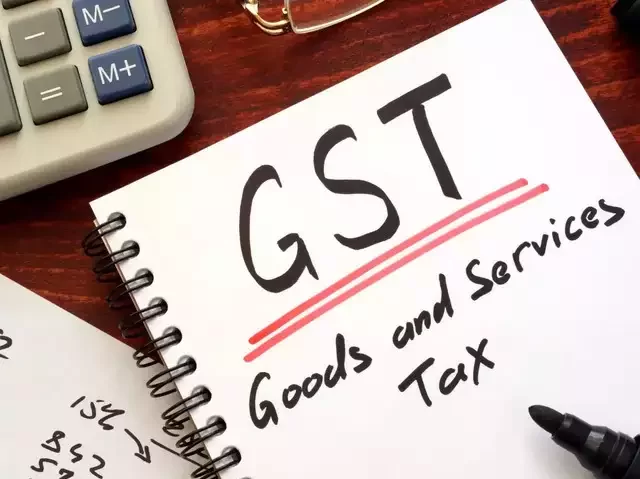The budget for the new financial year was announced on February 1. Now many important changes of that budget are going to be implemented from April 1. The main one among them is the rule of tax free income on income up to 12 lakhs. On the other hand, many items will become expensive and many items will become cheaper. Let us tell you about this in detail.
The new budget passed by the Parliament will come into effect from Tuesday, April 1, 2025. Many benefits ranging from income tax to subsidy will come into effect from this date. From April 1, the rule of tax free income will be applicable on income up to 12 lakhs. Income of Rs 6 lakh from rent will become tax free. The exemption on interest income for senior citizens will be doubled. There is going to be many changes in the TCS limit, changes in the rules for filing updated returns, GST and NPCI rules as well. Let us try to understand these in detail.
No tax upto 12 lakh
Under the new tax regime, now there will be no tax on income up to Rs 12 lakh. For salaried people, this exemption will increase to Rs 12.75 lakh with a standard deduction of Rs 75,000. A new slab of 25% tax has also been included in the new tax regime for income of Rs 20 to 24 lakh.
Impact: Earlier the maximum rate of 30% was applicable on income above Rs 15 lakh, but now this limit has been increased to Rs 24 lakh. This will help the middle and upper-middle income groups save tax.
TDS limit increased
Exemption on rental income doubled: It has been increased from Rs 2.4 lakh to Rs 6 lakh.
Exemption on interest income for senior citizens doubled: TDS limit for senior citizens earning interest income from bank FDs has been increased from ₹50 thousand to ₹1 lakh.
Increase in TDS limit on professional services: The TDS limit on professional services has now increased from Rs 30,000 to Rs 50,000.
What will be the impact: This will reduce the TDS burden on low-income individuals and improve cash flow.
TCS limit increased
What has changed: The limit of Tax Collected at Source (TCS) on sending money for studies abroad has now increased from Rs 7 lakh to Rs 10 lakh. However, if the money is taken as a loan from any financial organization like bank etc., TCS will not be levied.
Impact: The removal of TCS will benefit both students and their families. Earlier, 0.5%-5% TCS was deducted on amounts above Rs 7 lakh. This made the transferring process a bit hectic. Now, the entire amount up to Rs 10 lakh will be able to reach the other end.
More time to file updated returns
The change is this: Now taxpayers will be able to file updated returns up to 48 months from the end of the assessment year instead of 24 months. There are some conditions for this. The first is that 60% additional tax will be applicable on returns filed between 24 to 36 months. The second condition is that 70% additional tax will be applicable on returns filed between 36 to 48 months.
Impact: This will give taxpayers more time to correct their mistakes. Voluntary compliance will also increase. That is, a person or organization voluntarily follows the rules and laws.
Capital Gains Tax on ULIP
Change: If the premium of ULIP i.e., Unit Linked Insurance Plan is more than Rs 2.5 lakh per year, then it will be considered a capital asset. Any profit made by redeeming such ULIP will be taxed as capital gain. ULIP is a product in which a part of the premium is invested in the stock market. If it is held for more than 12 months, then it will be taxed at 12.5% as Long Term Capital Gain (LTCG). If it is held for less than 12 months, then it will be taxed at 20% as Short Term Capital Gain (STCG).
Impact: Investors in ULIPs with high premiums will now have to pay tax. The government has made these changes to prevent high-income tax payers from using ULIPs as a tax-free investment instrument. A large portion of ULIP premiums is invested in the stock market, so the government argued that it should not get tax exemption like traditional insurance.
what is cheap and expensive
Changes: In the budget presented in February, the government had reduced the custom duty on some products and increased it on some. This will affect about 150-200 products. Generally, changes in custom duty come into effect from the beginning of the financial year i.e. April 1, 2025. However, the dates of implementation of some changes depend on the notification of the Central Board of Indirect Taxes and Customs (CBIC). For example, in the last budget, some custom duty changes (such as on mobile phones and precious metals) came into effect from July 24, 2024.
Effect: Some things may become cheaper and some may become costlier. The increase or decrease in custom duty has an indirect effect on the prices of things.
what will be cheaper
- Imported cars costing more than $40,000 or having an engine capacity of more than 3,000 cc.
- Motorcycles imported as CBU units having engine capacity not exceeding 1600 cc.
- Removing custom duty on 36 life saving medicines will reduce the cost of critical treatment.
- EVs may become cheaper. The government has removed duty on 35 capital goods for battery manufacturing.
- 28 capital goods for mobile phone battery production exempted from customs duty.
Items that may get expensive: Smart Meter Solar Cells, Imported Footwear, Imported Candles, Imported Yachts and Other Vessels, PVC Flex Films, PVC Flex Sheets, PVC Flex Banners, Fabric made from knitting process, LCD/LED TVs
When will the benefits of the schemes announced in the budget be available?
The benefits of social welfare schemes like cash assistance for farmers, schemes for women, or employment schemes can start coming in from June-July. It takes time to get the benefits of projects like road, rail, or school-hospital, because there is a process of planning, tender and construction for these.
Track-trace for GST evasion
The government is going to introduce a track and trace mechanism to catch GST theft in the new financial year 2025-26 starting from April 1. The track and trace mechanism was announced in the budget presented in July for the current financial year. Although the notification regarding this mechanism has not been issued yet, it can be issued till today. This will bring these mechanisms into effect from April 1. The track and trace mechanism will be used by the GST authority for certain types of goods. This mechanism will be used for the entire supply chain of FMCG sector, tobacco related items as well as medicine and cosmetic items. The sale of these types of goods is found to be less than the actual supply. Under the mechanism, the government will have information from the time the goods leave the factory to reaching the retail shop.
GST department will generate a unique code
The GST department will provide its software to the manufacturers of such goods and a special code will have to be created for the selected goods. That code will be linked to that software so that there will be no tampering of the information regarding supply of goods. If the manufacturers of goods falling under the track and trace mechanism do not adopt it, then they may have to pay a fine of at least one lakh rupees. Changes in GST rules from April 1 From April 1, it will be mandatory for businessmen doing annual turnover of more than Rs 10 crore to provide information about the e-invoice on the invoice registration portal within 30 days of its issuance. Earlier there was no time limit for providing such information.
Old users will have to update their identity: From 1st April, GST portal users will have to provide multiple identity details for their strong identity. Old users will also have to update their identity. Apart from this, if a businessman has done multiple GST registrations in different states with one PAN number, then it will be mandatory for such businessman to register as Input Service Distributor for distribution of input tax credit.
No UPI from inactive mobile
National Payments Corporation of India (NPCI) has issued new rules to increase the security and effectiveness of UPI transactions. These rules are coming into effect from April 1. According to this, if you do not use your mobile number for 90 days, then the telecom company can give that number to someone else.
What does this mean?
This means that if you have linked UPI to your old mobile number and that number is closed, then your UPI ID will also not work. That means you will not be able to use UPI services.
Will check and update at least once a week: From April 1, banks and UPI apps will check and update customers’ mobile number records at least once a week to avoid erroneous transactions due to changed mobile numbers.
UPI users will have to do this work
Update your mobile number with the bank to ensure UPI services continue.
If you have changed your number recently, register the new number with the bank soon.
Keep using the bank registered number so that it does not become inactive and UPI services are not affected.
Collect payment feature will be removed: To reduce fraud, NPCI has recently started the process of removing the collect payment feature. Now this feature will be limited to only big and verified merchants. Its limit in individual transactions will be made Rs 2,000.













